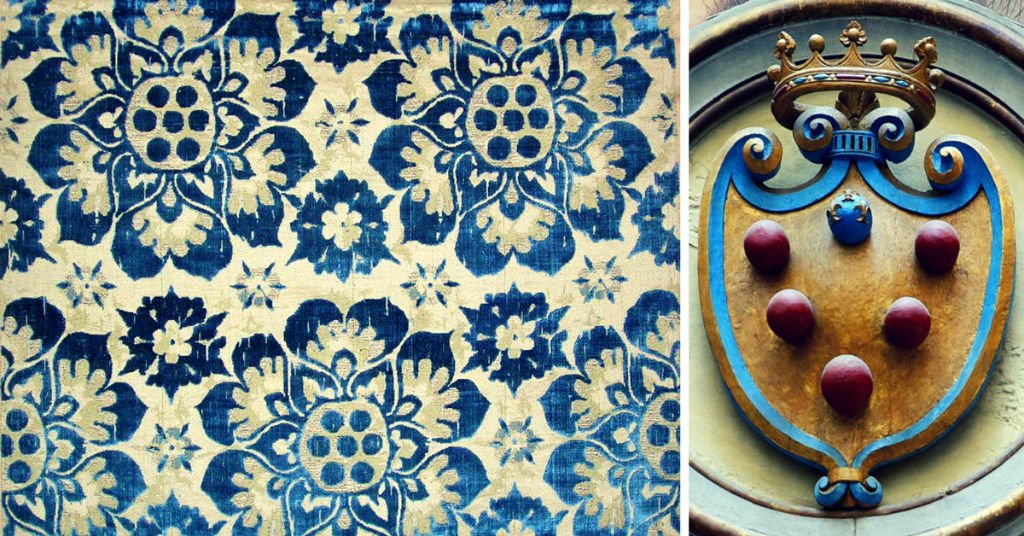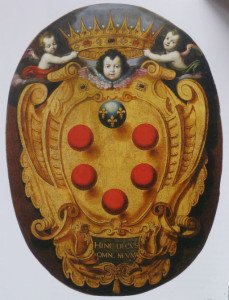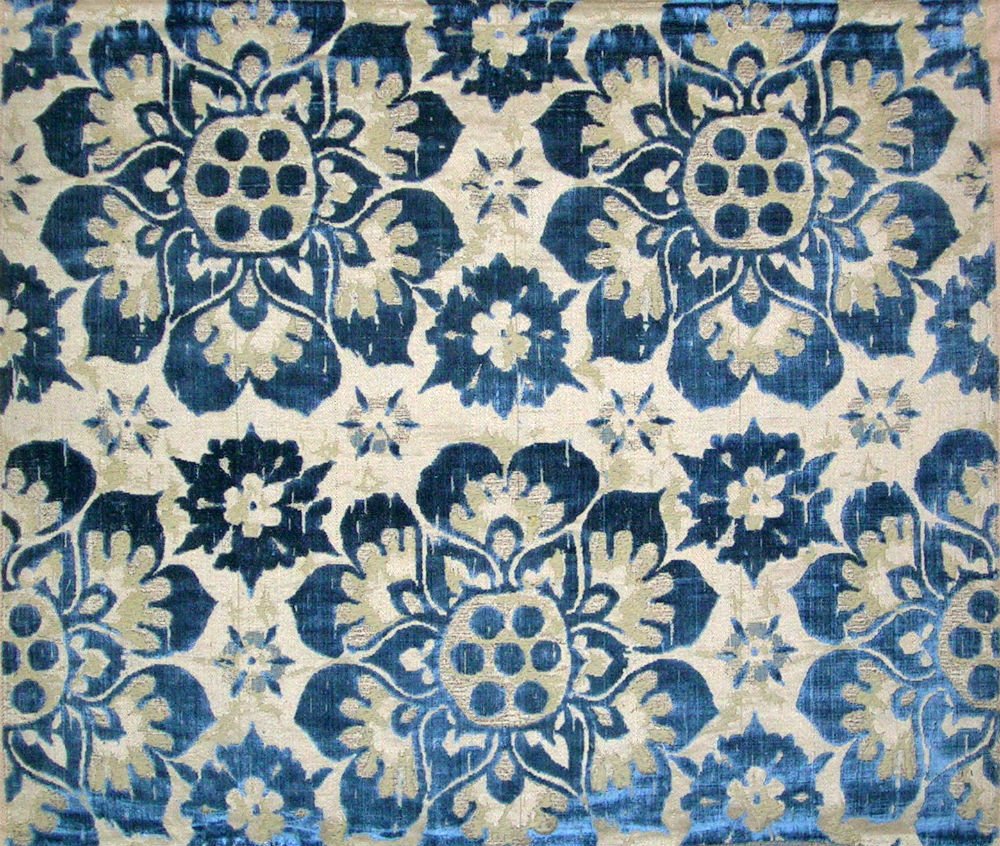“Balls, balls!” the Florentines were crying when, in 1478, they chased Jacopo de’ Pazzi and his fellow conspirators, who had taken part in the Pazzi Conspiracy. But which balls? The ones popping up everywhere in Florence, on façades, vaults and lintels of villas, public buildings and churches. They’re the crest of the family that ruled first Florence and then the Grand Duchy of Tuscany from 1434 to 1737: the de’ Medici.
The balls on the coat of arms of the Medici
There are many theories about the origin of the balls on the coat of arms of the Medici family. From the oranges hinting at the Medici’s trades with the East to the pills that would explain the name of the family (medici means “doctors” in Italian), since pills were round and red, during the Middle Ages.
According to the best grounded hypothesis, the Medici would have drawn their inspiration for the blazon from the crest of the Arte del Cambio (“Guild of Change”) and from the job to which they owed their ascent to power, that of bankers: its “balls” – as Florentines called them – are placed on a gold field and are six, five red and one blue and containing three golden lilies.
But since similar “balls” can be seen on the coats of arms of other noble families of Tuscany, they have been described as the studs fixing straps to shields, too, which would later develop into part of the crest.
As in any other noble family, though, there’s a mythical theory on the Medici’s coat of arms, too. According to it, the balls are the dents left by the hammer of the giant Mugello on Averardo de’ Medici’s shield. This forefather of the Medici family was the commander of Charlemagne’s army who slew the giant and the Longobards in Tuscany.
The Italian silk velvet “Stemma Medici”
Whatever the truth is, this coat of arms is embroidered on one of the Italian silk velvet fabrics by Bevilacqua. The balls of this pattern are seven and hidden within the pistil of large blue flowers: as a matter of fact, until the 15th century their number on the Medici’s blazon could vary by up to eleven.
The more frequent number six is recalled, instead, by the two rows of petals, the outer one showing six heart-shaped petals, and the inner one made up of six leaf-shaped petals.




